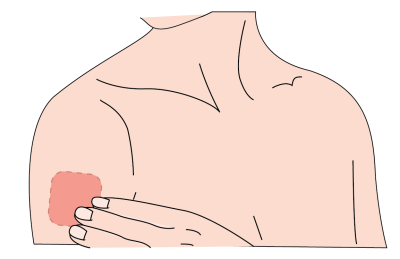
The patch releases two hormones – oestrogen and progestogen which are similar to the natural hormones that women produce and are like those used in the combined pill.
Please explore the following sections for more information:
If 100 sexually active women don’t use any contraception, 80 to 90 will become pregnant in a year.
The contraceptive patch is over 99 per cent effective if used according to instructions. Less than one woman in 100 will get pregnant in a year.
It works by stopping an egg being released (ovulation), thickens cervical mucus to prevent sperm reaching an egg, and thins the lining of the uterus to prevent a fertilised egg implanting.
- You don’t have to think about it every day
- It still works if you vomit or have diarrhoea
- It can make your periods regular, lighter and less painful
- It is easy to use
- It may improve acne
- It is not suitable for very overweight women
- It not suitable for smokers over 35 years
- There is a low risk of serious side-effects such as blood clots, breast and cervical cancer
- Side-effects can include increased vaginal discharge, headaches, nausea, breast tenderness and mood swings but these are usually temporary
- Not suitable whilst breastfeeding
- Not suitable for some medical conditions e.g. diabetes with complications, migraine sufferers
- It may cause skin irritation
- It may be seen by others
- Some medicines can make it less effective
- Breakthrough bleeding and spotting is common in the first few months but this usually improves.